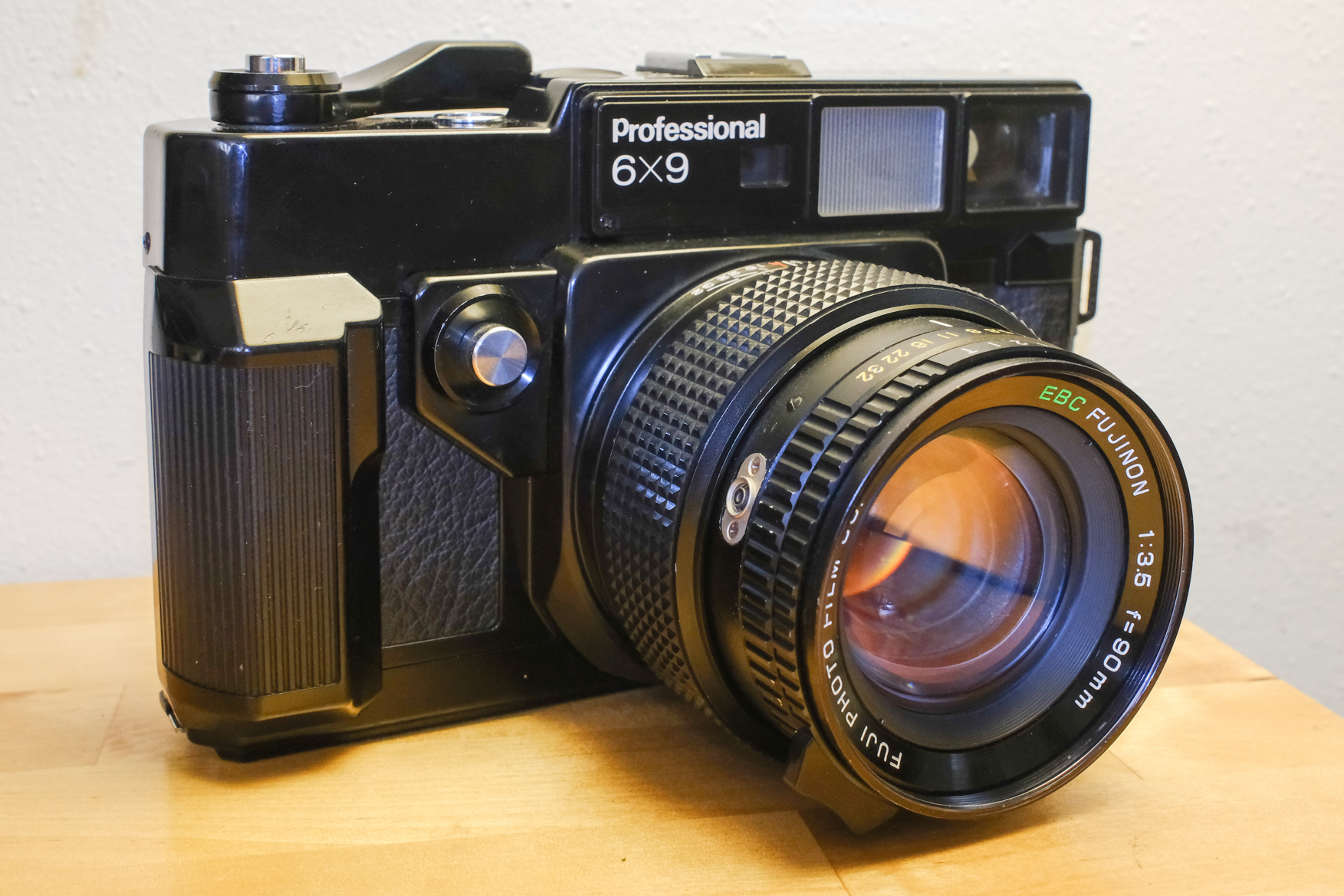Fujica GW690 Thoughts | March 8, 2025

The primary reason I wanted to get into film photography was to slow down. After buying and using a higher-end point-and-shoot digital camera, the Ricoh GR III, I discovered that I really enjoyed photography. However, one of the main things I dislike about digital cameras is how easy it is to take an overwhelming number of shots.
For example, along the coast of Lake Garda, just south of a tiny village called Malcesine, there was a beautiful beach overlooking the lake. To our left stretched the vast expanse of water, framed by tiny coastal towns and towering mountains, with the rolling foothills of the Alps in the distance. Directly in front of us stood the cliffs of the mountain formations on the opposite side of the lake, and to the right, the town of Val di Sogno jutted into the water, encompassing a group of sailboats in its bay. It was a breathtaking scene—something we absolutely needed to capture. And goddamn, did I try. I probably took hundreds of photos, all in an attempt to do it justice. In the end, I kept maybe five to ten of them. I hate this.
Part of the reason I took so many photos was that I was still learning about composition and how to identify strong shots in real time. But I was also so preoccupied with capturing the photo that I couldn’t stop myself from overshooting.
After doing extensive research (aka just sitting on my ass watching YouTube videos), I learned that one of the main reasons people love film photography is that it forces you to slow down. With 35mm, you only get 36 exposures per roll, and each roll costs anywhere from $8 to $20. So, you’re limited both by how much film you’re willing to carry at any given time and how much money you have to spend. (We also develop and scan our film at home, which further slows the process, knowing we have a few more hours of work before we see the final results.) Because of this, you’re almost required to be more intentional with each shot, which naturally slows you down.
Early on, I found this to be a pretty successful approach, and I loved shooting with my Canon A-1. In fact, I think I got some of my best images during a trip to Colorado with my brothers. However, I soon found myself falling into a similar trap as with my digital camera—worried about missing the shot and taking multiple, nearly identical compositions. So, I had two choices: practice impulse control and not do that, or find a more fun solution.
I bought a Fujica GW690. Also known as the Texas Leica, this camera is a 6x9 medium format rangefinder with a fixed 90mm f/3.5 lens. I chose it for two main reasons: it is fully mechanical and does not have a light meter, and it is relatively small, so I could travel with it if I wanted to. However, I quickly learned that despite being compact for a medium format camera, this thing was still a beast—and I had absolutely no interest in traveling with it. Furthermore, when traveling with friends and family, I didn’t really have the time to meter a scene and get a perfect exposure. I didn’t even bring it on my trip to California with my girlfriend, my brother, my sister, and her boyfriend. Instead, I stuck with my trusty Canon A-1 and the Ricoh GR III.
Ultimately, I ended up using the Texas Leica almost exclusively on a tripod at home in Madison, which didn’t feel like what the camera was really meant for. On top of that, I realized that the restriction of the fixed lens was too much for me. I initially thought the limitation would push me to be more creative, but instead, I found it stifling. Additionally, I bought the first version of the GW690, which lacked a shutter button lock, so I constantly had to remind myself not to advance the film after each shot—something I found very annoying. To be honest, there wasn’t much I liked about this camera. Granted, it excels at what it aims to achieve—portability (for a medium format camera), excellent glass, HUGE negatives, and relatively quick focusing. But I actually have no idea who this camera is for. To me, the combination of portability, 6x9 negatives, a rangefinder, and the lack of a light meter all feel somewhat contradictory. It seems like this camera requires a very specific type of person or use case—and that person is certainly not me.
So, good riddance to the Texas Leica, and stay tuned for my thoughts on the replacement.